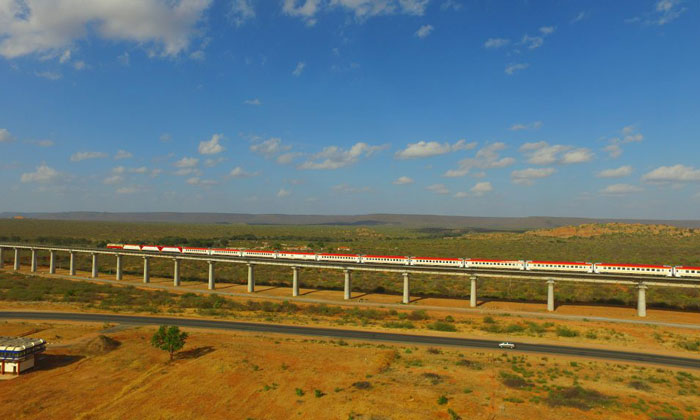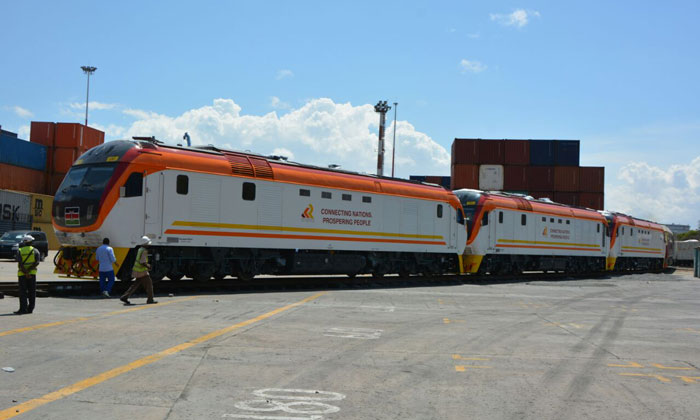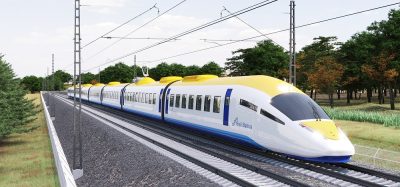Kenya Railway’s Standard Gauge Railway
Posted: 27 July 2017 | | 1 comment
In light of recent reports that the first new railway line for over a century in Kenya, the Standard Gauge Railway (SGR), has had to justify its relatively high costs*, Global Railway Review discusses the project in a little more detail…


Copyright: http://krc.co.ke
The SGR has been commissioned due to the governments of Kenya, Uganda, Rwanda and Southern Sudan being “committed to providing high capacity, cost effective railway transport within the Northern corridor”** which is to be achieved through the construction of a high capacity, high-speed Standard Gauge Railway for passenger and freight transportation.
The governments of the four countries signed and ratified a protocol for the development of an SGR connecting the port of Mombasa to Kampala, Kigali and Juba with each country developing the section of the railway line within its borders.
Kenya, therefore, developed the Mombasa-Malaba section, which was developed in two phases:
- Phase 1 Mombasa-Nairobi which commenced on 12 December 2014, and was operational in July 2017.
- Phase 2 (Nairobi-Malaba) which has been divided into three sub-phases:
– Phase 2A: Nairobi-Naivasha
– Phase 2B: Naivasha-Kisumu including the development of a new high capacity port at Kisumu
– Phase 2C: Kisumu-Malaba.
The plan is for the railway to have a uniform design which will permit seamless operation across the borders of the four countries and in turn reduce transportation and production costs.
Commenting on the importance of the SGR, Transport Cabinet Secretary Mr. James Macharia has said that the SGR project is a vital installation in the transport sector in the country and that this year, Kenyans will herald a new dawn with the commissioning of the Standard Gauge Railway line**.
Indeed, the new line will decrease journey times for Kenyans; shortening the travel time from Mombasa to Nairobi from over ten hours to a just over four hours, with freight trains completing the journey in under eight hours. It also represents the biggest investment in rail infrastructure since 1901, with the project comprising 609 kilometres of rail line steadily fixed onto concrete sleepers and running for the better part on raised mounds of earth that will embrace the 4000 tonnes of weight stacked doubly against it.
Furthermore, thousands of locals have been employed on the line, making the SGR project one of the biggest employers in the country. The line also created a window of opportunity for local businesses, which supplied goods and services to the contractor.
The SGR (or Madaraka Express as it is also known) opened on 31 May 2017 operating two types of trains; the Intercity and County Trains. The Intercity Train is an express train between Nairobi and Mombasa while the County Train will make stops at the intermediate stations namely; Mariakani, Maisenyi, Voi, Mtito Andei, Kibwezi, Emali and Athi River.
The Intercity Trains operate at a maximum speed of 120km/h, will achieve a transit time of four hours and 30 minutes and will offer 1,200 seats per train, while the County Train with the same seats capacity is scheduled to take about five hours and 30 minutes.


DF11 locomotive for passenger services on the SGR
But with the opening of this new line came questions in regards to cost. According to the BBC* at $5.6 million per kilometre for the track alone, Kenya’s line cost close to three times the international standard and four times the original estimate with around 80% of the money for the new railway coming through loans from China, which are the country’s biggest yet – amounting to roughly 6% of Kenya’s gross domestic product (GDP), which is a measure of a country’s economic activity, including all the services and goods produced in a year.
The costing of the SGR has been compared to that of Ethiopia’s 756km Addis Ababa-Djibouti line, which launched last year as both are Standard Gauge Railway (SGR) projects financed by Chinese loans, costing $3.4 billion (£2.6 billion) for Ethiopia and $3.2 billion for Kenya. However, Ethiopia’s line is over 250 kilometres longer and is electrified, which is typically more expensive, while trains running on Kenya’s line will be diesel-powered.
However, these comparisons have been rejected by Nairobi-Kenya Railways Corporation (KR), with the corporation’s Managing Director, Atanus Maina, saying: “Ethiopia are constructing class two (type) railway dictated by their demands. Their cargo volumes are less than 10 million tonnes, so we cannot do a class two here. The port of Djibouti does less than 7 million tonnes while the port of Mombasa is doing nearly 30 million tonnes per annum. Our SGR has a capacity of about 22 million tonnes per year, with double stack capability,” he explained, adding that the cost implications will differ.
“[The] Ethiopian corridor has enough level crossings as it passes through areas where they don’t have a lot of people. For Kenya, the area is heavily inhabited… we had to do a lot of bridges and we needed to have more stations and land compensation, this will definitely have a huge impact on cost.”***
There is no doubting the positives the Madaraka Express will have for the people of Kenya, shortening travel times and bringing new, modern rail infrastructure to the country, however, whether the cost of the railway will be beneficial to the country’s economy will have to remain to be seen.
** krc.co.uk* As reported by BBC news 08/06/2017 (http://www.bbc.co.uk/news/world-africa-40171095)
*** http://www.capitalfm.co.ke/








But 4.hours to Mombasa journey by train is great as it defeats those earlier more than 12 hours…I am one of the excited ones.